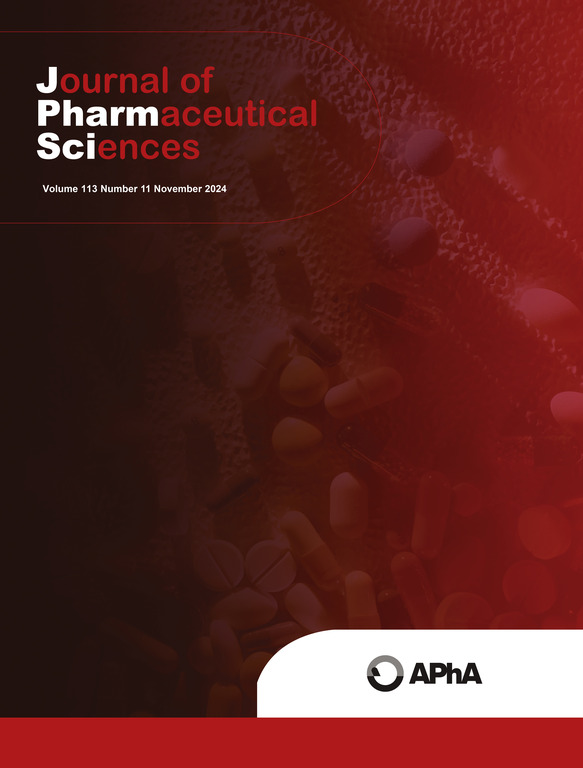利用喷雾干燥和原子层沉积技术配制三尾噬菌体,实现热稳定性和控释。
IF 3.7
3区 医学
Q2 CHEMISTRY, MEDICINAL
引用次数: 0
摘要
深部感染是继假体松动之后关节置换术的第二大常见并发症。1 通常使用抗生素骨水泥(ALBC)和高浓度的全身广谱抗生素来预防损伤和手术后的感染。4 噬菌体疗法或使用噬菌体(感染细菌的病毒)来针对病原菌,可能会为抗击 MDR 细菌提供一种安全的替代方法。在深度感染中应用噬菌体疗法需要采取配方策略,在骨水泥聚合过程中稳定噬菌体以抵御化学和热应力,在生理温度下保持噬菌体活性数周或数月,并允许持续释放噬菌体以对抗生长缓慢的顽固细菌。在这里,我们展示了针对不同细菌病原体的三种噬菌体的配方,其中包括喷雾干燥颗粒,以增强在 37°C 及以上温度下的热稳定性。此外,我们还使用原子层沉积(ALD)技术在喷雾干燥的粉末上涂覆氧化铝,以延迟噬菌体从干燥配方中的释放,并在骨水泥聚合过程中保护噬菌体免受化学损伤。总之,这些发现为配制具有热稳定性和持续释放特性的噬菌体以用于深度感染提供了一种策略。本文章由计算机程序翻译,如有差异,请以英文原文为准。
Formulation of three tailed bacteriophages by spray-drying and atomic layer deposition for thermal stability and controlled release
Deep infection is the second most common complication of arthroplasty following loosening of the implant. Antibiotic-loaded bone cements (ALBCs) and high concentrations of systemic broad-spectrum antibiotics are commonly used to prevent infections following injury and surgery. However, clinical data fails to show that ALBCs are effective against deep infection, and negative side effects can result following prolonged administration of antibiotics. Additionally, the rise of multidrug resistant (MDR) bacteria provides an urgent need for alternatives to broad-spectrum antibiotics. Phage therapy, or the use of bacteriophages (viruses that infect bacteria) to target pathogenic bacteria, might offer a safe alternative to combat MDR bacteria. Application of phage therapy in the setting of deep infections requires formulation strategies that would stabilize bacteriophage against chemical and thermal stress during bone-cement polymerization, that maintain bacteriophage activity for weeks or months at physiological temperatures, and that allow for sustained release of phage to combat slow-growing, persistent bacteria. Here, we demonstrate the formulation of three phages that target diverse bacterial pathogens, which includes spray-drying of the particles for enhanced thermal stability at 37 °C and above. Additionally, we use atomic layer deposition (ALD) to coat spray-dried powders with alumina to allow for delayed release of phage from the dry formulations, and potentially protect phage against chemical damage during bone cement polymerization. Together, these findings present a strategy to formulate phages that possess thermal stability and sustained release properties for use in deep infections.
求助全文
通过发布文献求助,成功后即可免费获取论文全文。
去求助
来源期刊
CiteScore
7.30
自引率
13.20%
发文量
367
审稿时长
33 days
期刊介绍:
The Journal of Pharmaceutical Sciences will publish original research papers, original research notes, invited topical reviews (including Minireviews), and editorial commentary and news. The area of focus shall be concepts in basic pharmaceutical science and such topics as chemical processing of pharmaceuticals, including crystallization, lyophilization, chemical stability of drugs, pharmacokinetics, biopharmaceutics, pharmacodynamics, pro-drug developments, metabolic disposition of bioactive agents, dosage form design, protein-peptide chemistry and biotechnology specifically as these relate to pharmaceutical technology, and targeted drug delivery.

 求助内容:
求助内容: 应助结果提醒方式:
应助结果提醒方式:


